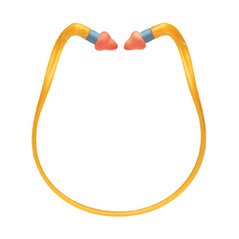Noise-induced hearing loss is a serious issue across many workplaces. We can tolerate a certain degree of noise without complication, but once we’re exposed to about 85 decibels (8 hours time-weighted average), we run the risk of permanently damaging our hearing.
Most troubling is how common this level of exposure is. Noise levels in factories, on construction sites, and in other workplaces with heavy equipment routinely meet or exceed this 85dB mark.

Since these noise levels are so common in certain workplaces, workers and even their supervisors often can lax about hearing protection. Supervisors might walk from work station to work station without using earplugs or earmuffs when the noise levels become hazardous. Workers might find it too inconvenient to use hearing protection when they’re doing a short task. Others still will protect their hearing when they’re using loud machinery but won’t do the same when those working nearby are operating their equipment.
On top of that, some workers are not even aware of the risks that come with exposure to high-decibel noise. They may mistakenly believe that if they’re able to tolerate the noise around them, then it couldn’t be causing any damage. In reality, there are plenty of damaging noise that we’re able to put up with, especially for a short period of time (lawn mowers often exceed 90dB, for instance, and rock concerts can be louder than 100dB).
In this article, we’ll cover what you need to know when it comes to controlling occupational noise hazards and preventing noise-induced hearing loss.
Employer Responsibilities for Noise Control
Employers must first and foremost inform the employees about the noise levels associated with each job site and educate them about the risks and appropriate prevention methods.
Employers must also implement control measures to reduce hazardous exposures to noise:
- Elimination or substitution: Can the noise-producing task be substituted for one that does not produce harmful levels of noise?
- Engineering controls: Can you add soundproofing to enclosed work spaces to prevent exposing other employees the high levels of noise? Can the equipment be replaced with a quieter model?
- Administrative controls: Is it possible to rotate worker assignments and tasks so no employee is exposed to high noise levels for an extended period of time?
- Personal protective equipment: What PPE do your workers need to protect their hearing? Will they need earplugs or earmuffs?
How Employees Can Protect Their Hearing
While employers are responsible for making sure that their workplaces are compliant with regulations governing noise levels and hearing loss, employees must still take a degree of responsibility for preserving their own hearing.
Be Attentive and Aware
Workers must first and foremost be attentive and aware of the hazards surrounding them. Before performing a task, they should take a moment to assess whether it will produce enough noise to require hearing protection (when unsure, workers should play it safe and use the PPE).
They should also ask themselves whether anyone near them will be performing high-decibel work. Just because the noise isn’t coming from their own work station doesn’t mean it won’t affect them.
Use Hearing Protection Equipment Properly
Employers may be responsible for supplying workers with the appropriate hearing protection, but employees still bear some responsibility for their PPE. In addition to making sure they use it when called for, workers should be sure to maintain and store their PPE in a proper fashion.
If the hearing protection has to be used in conjunction with other PPE like hard hats or eye protection, make sure none of the items interferes with the proper positioning and functioning of the others. No worker should have to choose between their hard hat and their earmuffs, so make sure both can be worn together comfortably.
Maintaining Hearing PPE
All PPE should be inspected on a daily basis. Earplugs should be clean and earmuffs should create a seal around the ear. Check the tension of the bands to make sure it keeps everything in place without causing discomfort.
Any worker who worries that their equipment might be compromised in some way, they should tell a supervisor immediately or replace the PPE. Any item that has been warped or damaged might not offer the same level of hearing protection as it did before.
Equipment Issues
Noise-induced hear loss is irreversible and can greatly affect one’s quality of life. Hearing conservation is not an optional extra, but something that must be taken seriously. So, take steps to reduce the noise levels in your workplace and supply your workers with the right kind of hearing PPE.



